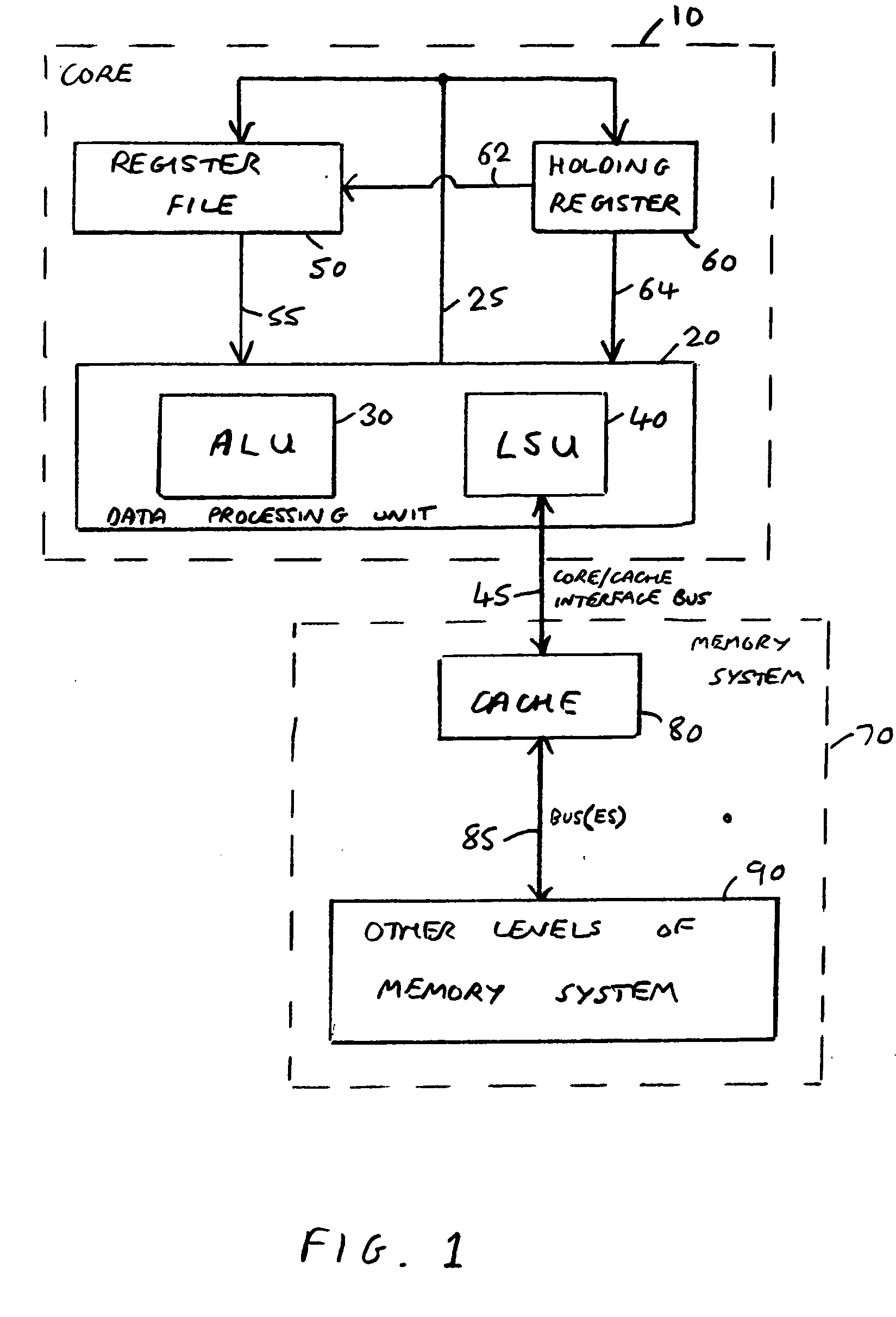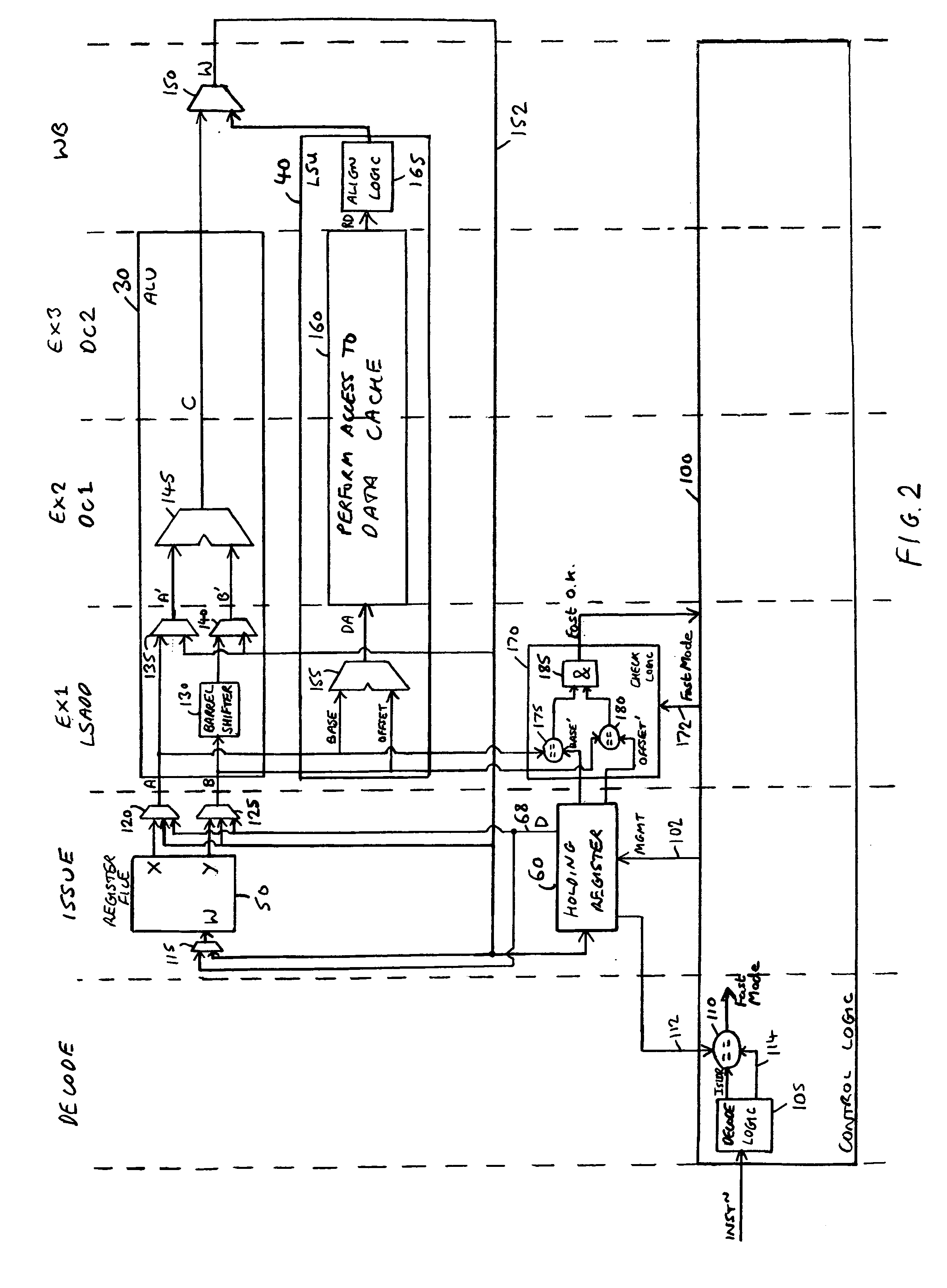Apparatus and method for loading data values
a data value and data processing technology, applied in the field of apparatus and method for loading data values, can solve the problems of increasing the time taken to return the data value to the data processing apparatus, the only effective cache in reducing the load latency, and other performance limiting features that are becoming more significant, so as to avoid timing penalties and save power
- Summary
- Abstract
- Description
- Claims
- Application Information
AI Technical Summary
Benefits of technology
Problems solved by technology
Method used
Image
Examples
Embodiment Construction
[0063]FIG. 1 is a block diagram of a data processing system showing the relevant components employed in accordance with one embodiment of the present invention. In particular, the data processing system has a processor core 10, also referred to herein as a data processing apparatus, which contains a data processing unit 20 and a register file 50. The data processing unit 20 may be a pipelined data processing unit, and will typically include a number of functional units therein used to perform different functions. For example, the data processing unit 20 may include an Arithmetic Logic Unit (ALU) 30 used to perform arithmetic operations upon data values, and in addition may include a Load-Store Unit (LSU) 40 used to load data values from memory system 70 into the register file 50, or to store data values from the register file 50 to the memory system 70.
[0064] Typically, the register file 50 will contain a relatively small number of working registers, for example 16 registers, and t...
PUM
 Login to View More
Login to View More Abstract
Description
Claims
Application Information
 Login to View More
Login to View More - R&D
- Intellectual Property
- Life Sciences
- Materials
- Tech Scout
- Unparalleled Data Quality
- Higher Quality Content
- 60% Fewer Hallucinations
Browse by: Latest US Patents, China's latest patents, Technical Efficacy Thesaurus, Application Domain, Technology Topic, Popular Technical Reports.
© 2025 PatSnap. All rights reserved.Legal|Privacy policy|Modern Slavery Act Transparency Statement|Sitemap|About US| Contact US: help@patsnap.com



